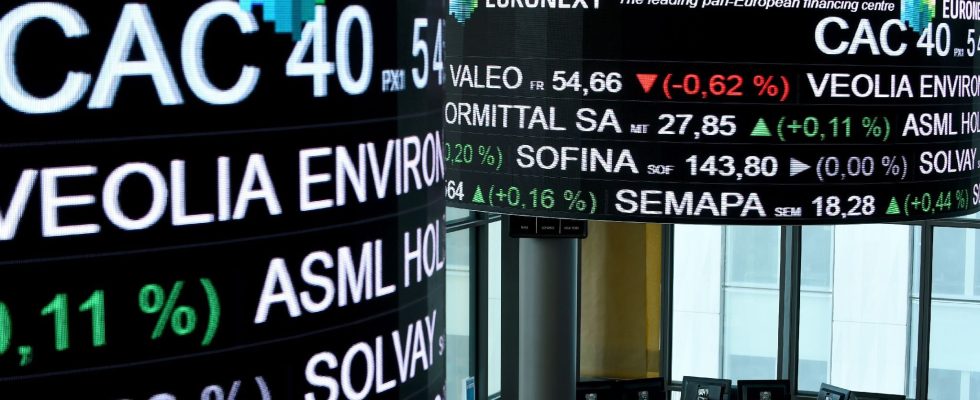The number of retail investors carrying out regular transactions in ETFs – exchange traded fund or listed index fund – has doubled in five years, according to the Financial Markets Authority (AMF), which lists nearly 300,000 active stock market traders in 2023. Appearing in Europe around twenty years ago, these instruments aim to replicate a market index quickly established itself in the stock market landscape. “Their adoption is based on the fact that in the long term, it is almost impossible to beat the market and that active management incurs penalizing costs,” considers Olivier Malteste, investment director of Yomoni. Conversely, ETFs show reduced costs each year.
Very established in the United States, where their market share is now greater than that of traditional funds, these vehicles have experienced strong growth in Europe in recent years. Between 2018 and 2023, PwC estimates it on average at 18.6% per year. Initially, it was mainly fueled by institutional investors: insurers, pension funds, etc. éWe estimate the share of individuals at around 10% of outstandings in Europe. This is probably less in France, where the development of these supports has been less marked than in other countries such as Germany, indicates Lorraine Sereyjol-Garros, global head of ETF and index fund development at BNP Paribas Asset Management.
The French are nevertheless increasingly active and represent a growth lever for management companies specializing in the field such as BlackRock, Amundi, Xtrackers, Vanguard or UBS. “ETFs can meet a wide range of needs, whether for saving with a long investment horizon or as a rapid transaction tool on the markets,” notes Emmanuel Monet, head of ETF sales for France at Amundi.
A wide offer
All the ingredients seem to come together to attract savers, starting with a generous offer. “The range is very complete with more than 3,500 ETFs available in Europe, across all asset classes, geographic areas, sectors of activity and themes,” underlines Olivier Malteste. In addition, these supports are increasingly accessible, particularly through life insurance, which represents a savings windfall of more than 1,900 billion euros. Quantalys estimates that one contract in two offers at least one ETF. Large traditional players, such as Afer, are doing so to meet the expectations of their customers.
The rise of online players also contributes to this. “For us, 30% of European ETF collection comes from digital distribution,” estimates Ivana Davau, head of digital distribution for France, Belgium and Luxembourg at BlackRock. The latter notes a polarization of the market, with, on the one hand, the rise of mandate management in ETFs, where portfolio monitoring is delegated to a professional, and, on the other hand, that of free management via new stock brokers such as Trade Republic, Scalable Capital, Shares, Bux, etc. These players thus contribute to making the support known. “Some distributors advertise and communicate a lot on social networks and, as a result, the word ETF is starting to be more visible,” notes Emmanuel Monet. Especially among young people. According to the AMF, at the end of 2023, those under 35 represented 36% of ETF investors, compared to 7% at the start of 2018. “The new generation of investors is adopting a more autonomous approach, training on the Internet and knowing little classic financial products”, analyzes Lorraine Sereyjol-Garros.
Latest innovation to date: investment plans, which are a hit in Germany. Behind the marketing concept, a fairly basic reality consisting of investing regularly and automatically in ETF portfolios in order to build long-term savings, painlessly and at a lower cost. The specialized platform ExtraETF estimates that the number of these plans could quadruple in five years. So many drivers which, coupled with increasingly strict regulations in terms of transparency on fees, open up an avenue for ETFs for the coming years.
.
